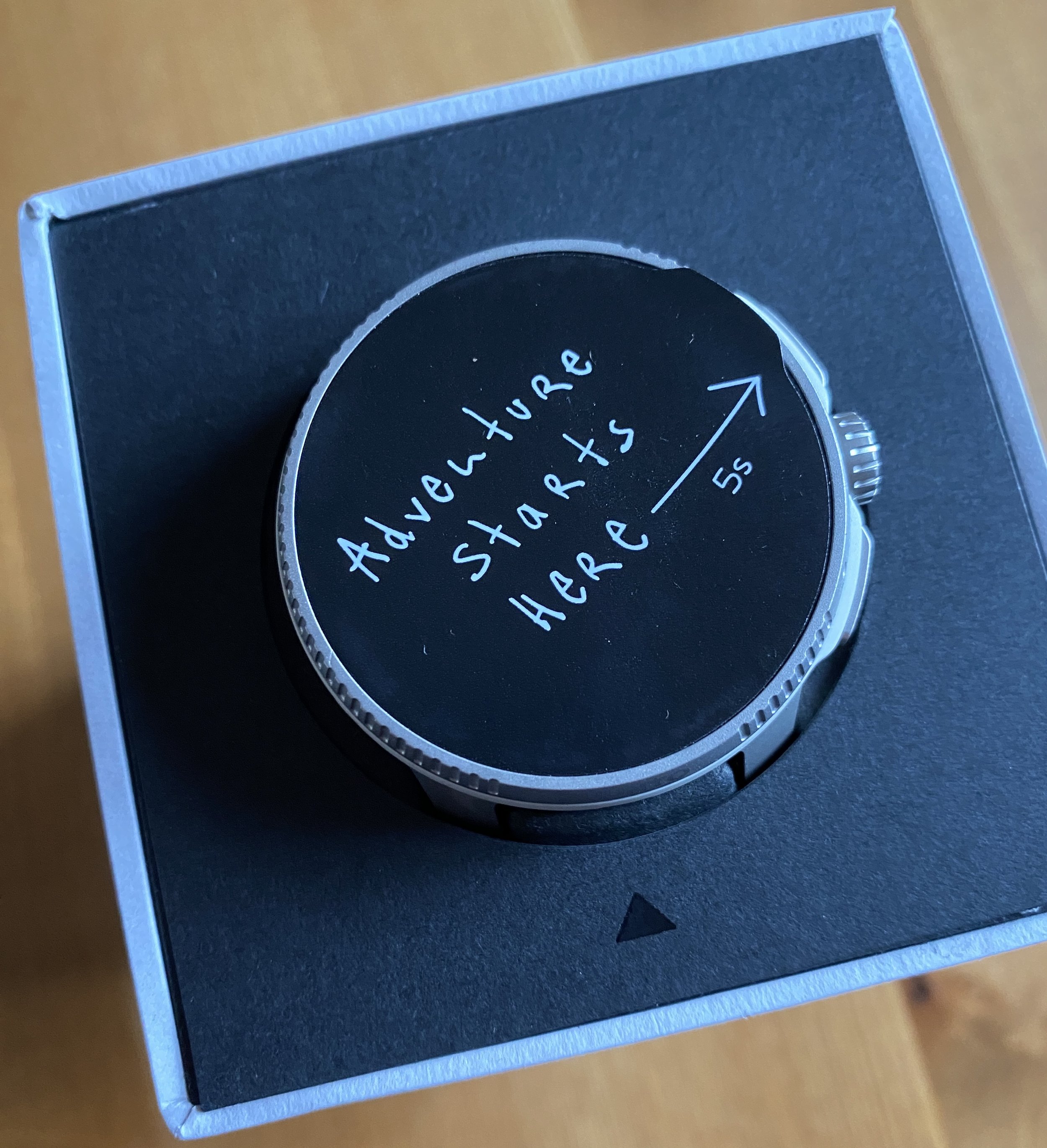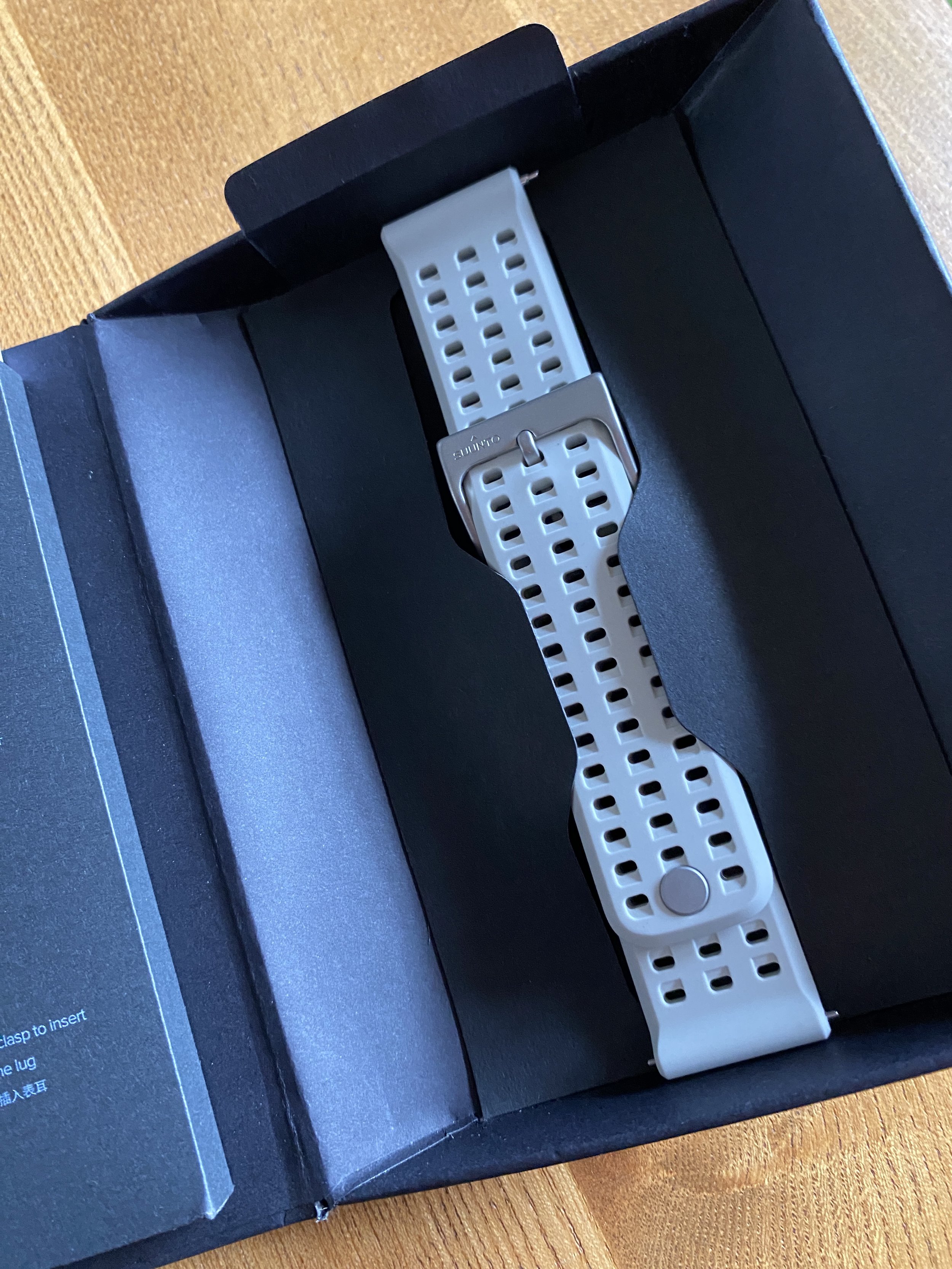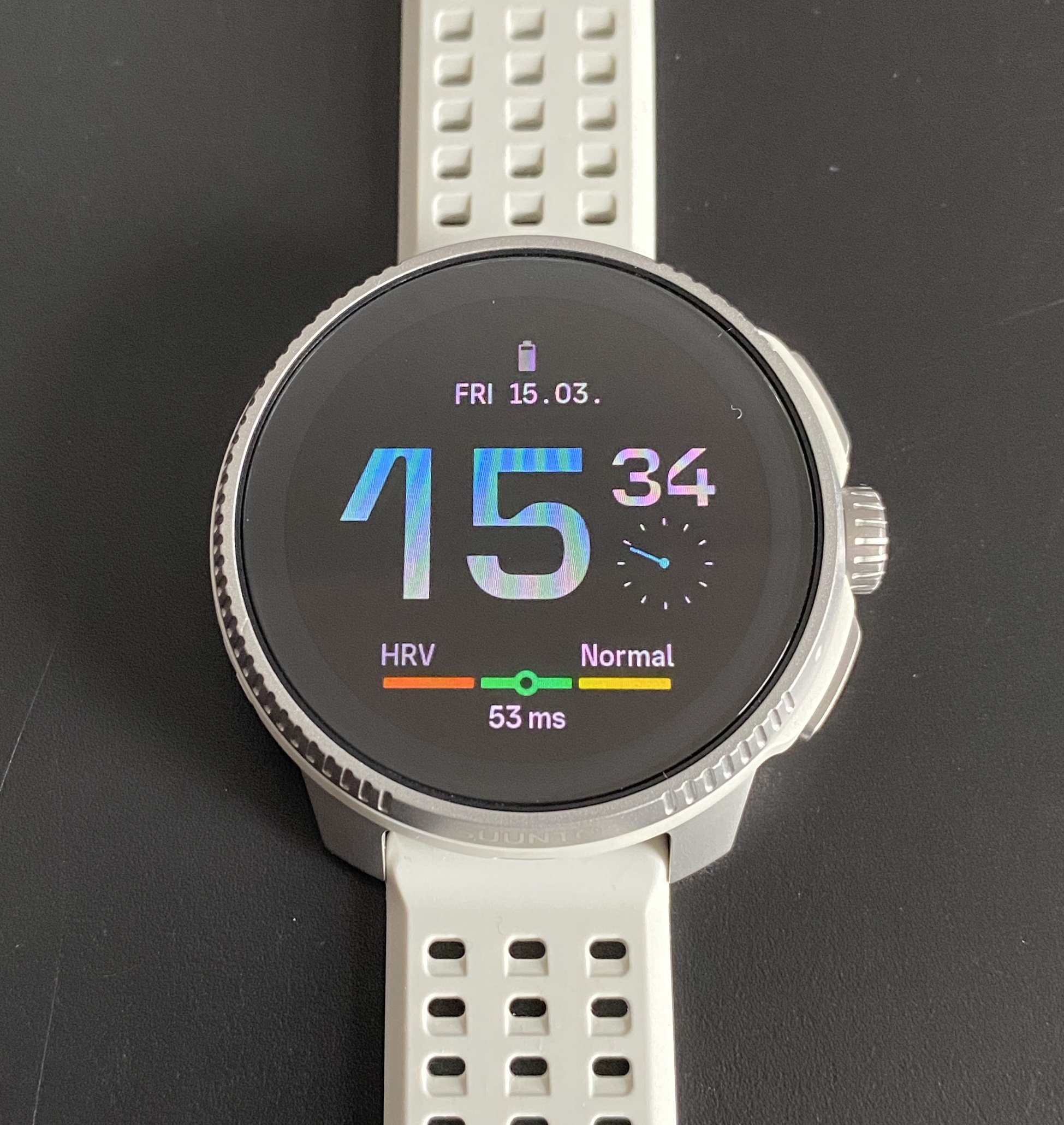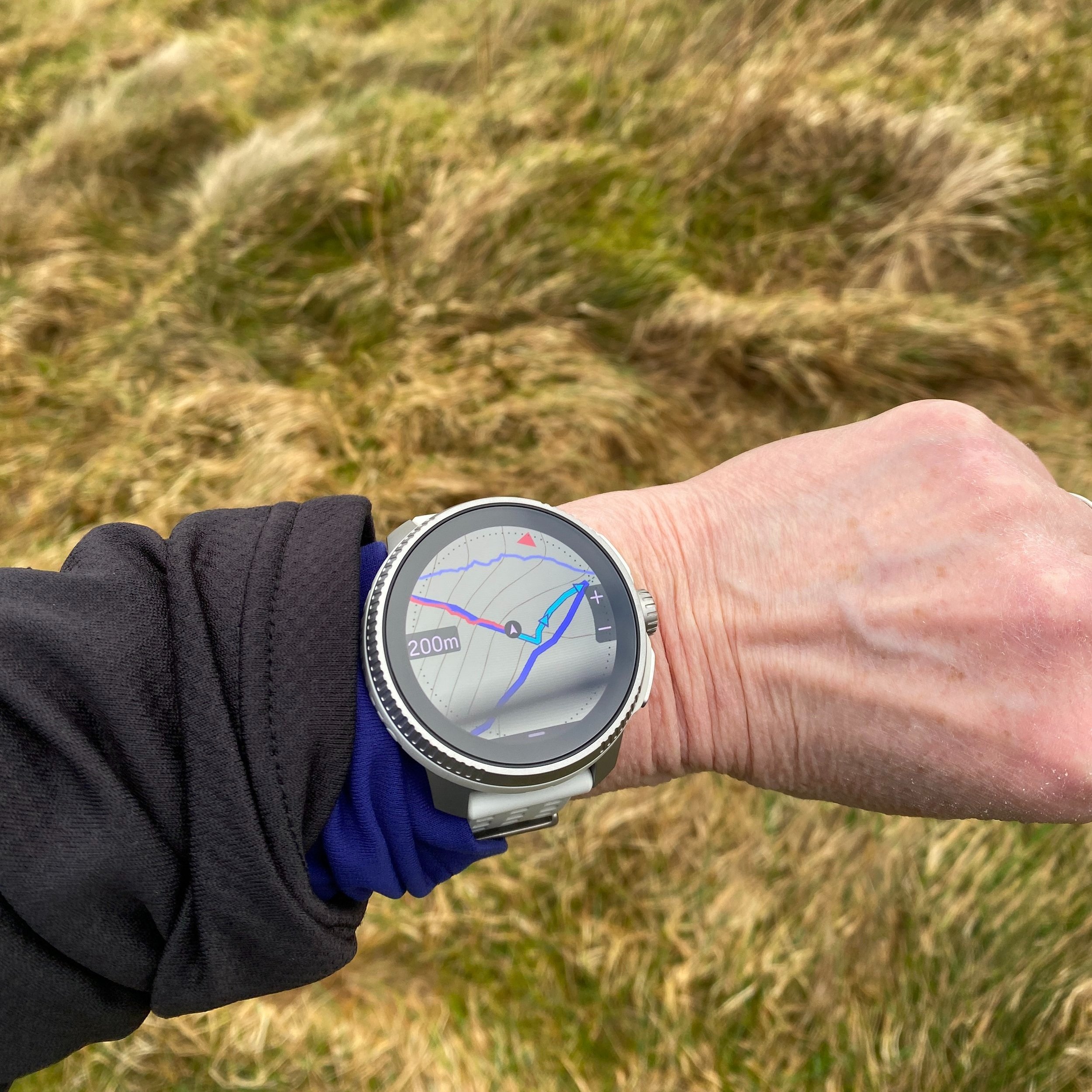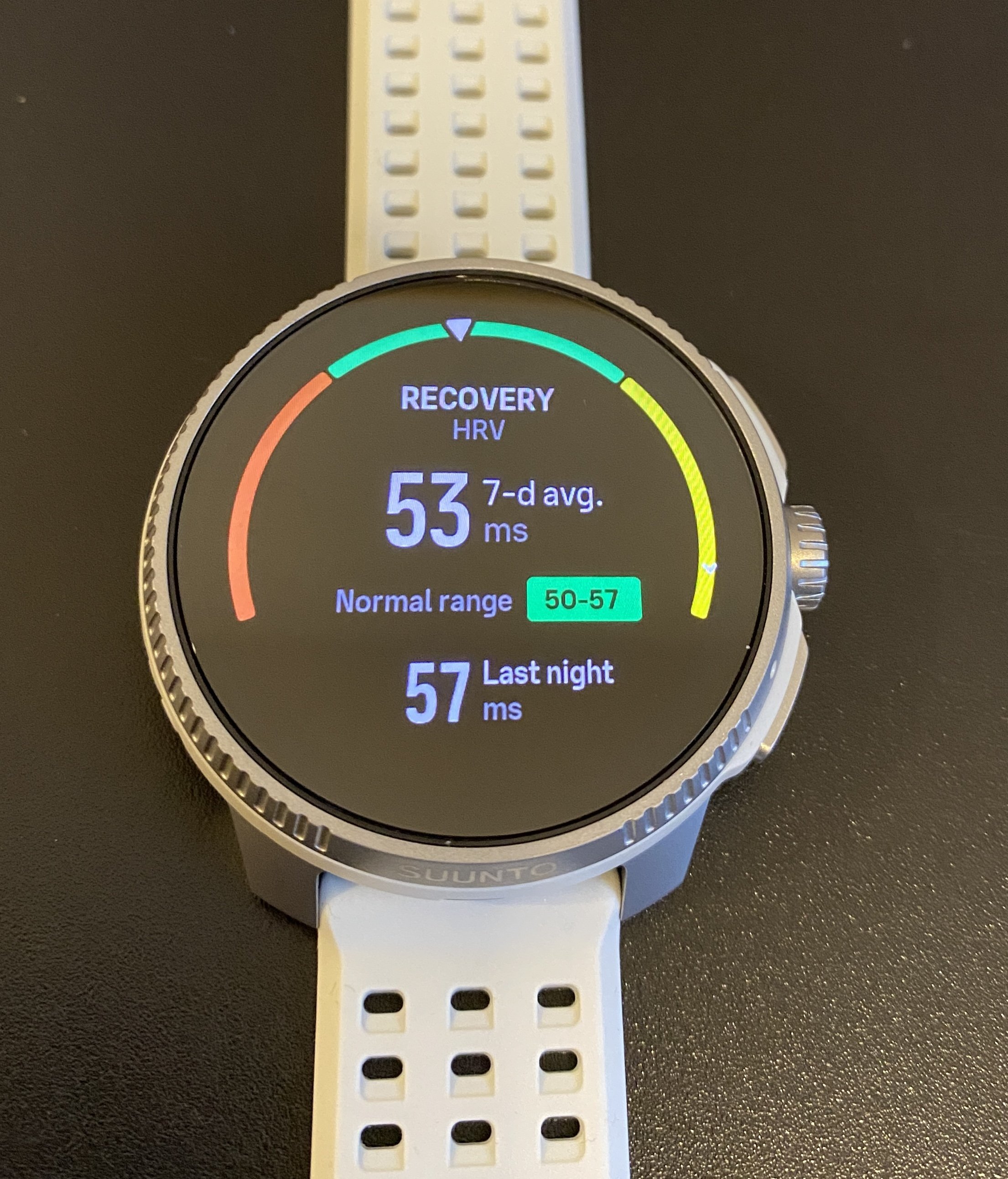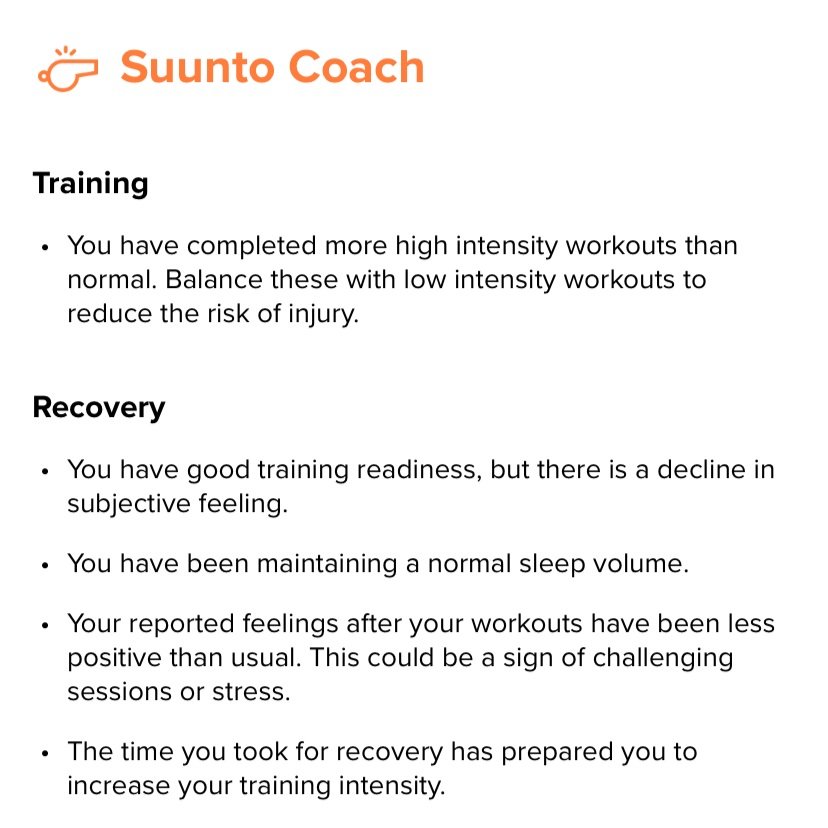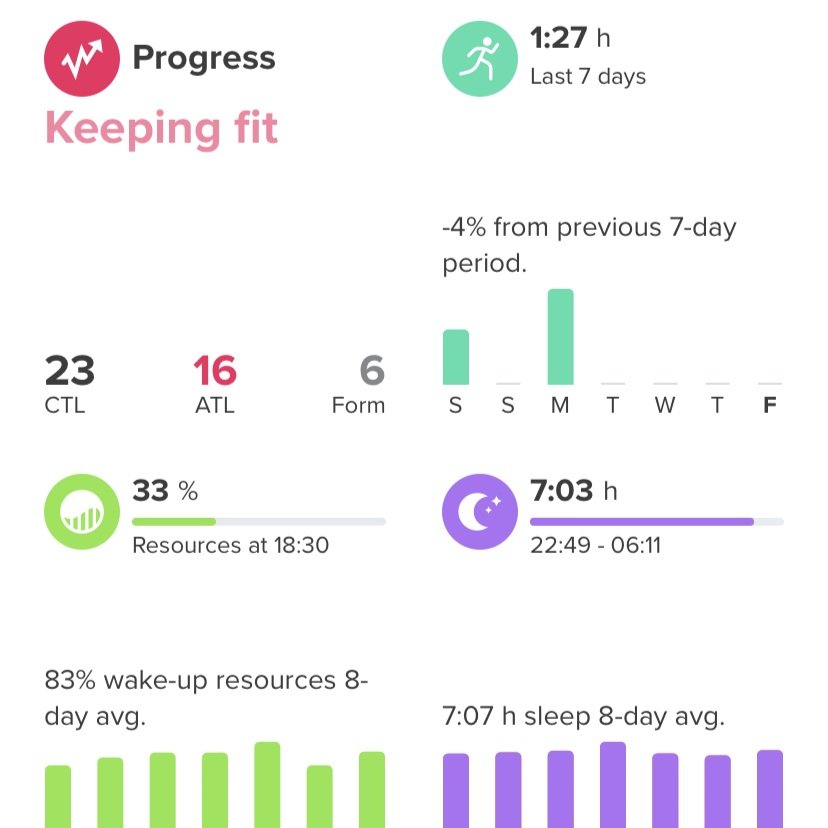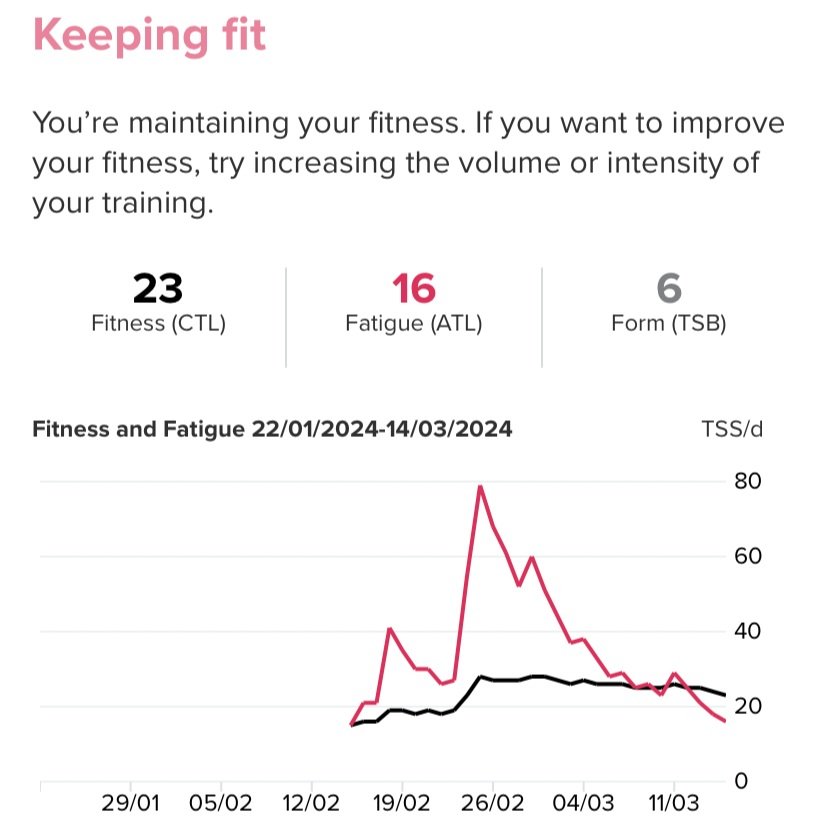Suunto Race review: GPS watch for the outdoors 2024
This post may contain affiliate links, including Amazon Associate links, which means I may receive a small commission at no extra cost to you if you purchase through a link.
Please see my policy on affiliate links.
Navigating with the Suunto Race
The Suunto Race - does it give all the features you need for outdoor adventure?
I’d been thinking about getting a GPS watch for a while. Something I could use for outdoor navigation when out walking or running, without draining my phone battery. I didn’t want a big chunky looking watch, but I did want maps to give context when following a route.
What started as a casual browse on the internet turned into an in-depth look at the various options available. The choice seemed limited for those of us with small wrists - mine’s 15cm in circumference - and it was overwhelming trying to compare the data.
So, I pulled everything together into a spreadsheet showing the specs and features for 12 different watches. I also wrote a blog post about eight of the watches on the list.
Download the comparison table PDF
Read: Best outdoor GPS watches for small wrists in 2024
Note that Suunto have released a Suunto Race S since writing this article.
The Suunto Race was one of the watches on the list and I had the opportunity of testing it for a full month.
For anyone in a hurry, here’s the TL;DR version of my thoughts on the Suunto Race. Even though this watch was bigger than I initially wanted, I absolutely loved it. I didn’t want to send it back when the test month was up, so I bought it instead. It’s packed full of features and has free mapping, all with a price tag of £389 that I honestly think is amazing value.
Find out more: Suunto Race on the Suunto website
Check price for Suunto Race at Amazon
Check price for Suunto Race S at Amazon
Read on for full details about my thoughts and experience after wearing the Suunto Race.
First impressions
The watch arrived beautifully packaged with the presentation making it feel like I was receiving a high-quality product. Incidentally, top marks to Suunto for sustainable packaging too. When you can see carbon footprint information for each watch on the website, it’s clear Suunto care about these things.
Initial set-up was easy to follow by downloading the Suunto app from the provided QR code, and then pairing the watch.
Attaching the watch strap was easy to do. The strap is a flexible silicone with lots of holes for breathability when exercising and a pin fastening to secure the end. It was the first time I’d come across that kind of fastening and I worried about security. But, after wearing for several weeks now, I love that there’s no flappy end to the strap.
The basics
The Suunto Race has a touchscreen for scrolling through the menu. That gets disabled when tracking an activity, unless you’re on a map view.
Digital crown
I love that Suunto have added a digital crown (the central button) to the Race. It’s used as a middle button, but also to scroll through menus and map views. It’s a great feature when wearing gloves, but I often use it at other times too.
In the early days, I did catch it by accident a few times, for example when taking a layer off, so was inadvertently scrolling. I now have the screen on lock during activities, so the worst it does is toggle through different displays. Changing my wake up mode has stopped it happening at other times.
Size and weight
Wearing the watch for the first time, I felt very aware of the size and weight. At 49mm and 83g, it was the biggest and heaviest watch in the review, plus I’d come from wearing a tiny lightweight watch. I was honestly surprised when, a couple of weeks later, I stopped noticing it was on. Interestingly too, I now wonder whether the depth (how much it stands clear of my wrist) means no rubbing on my wrist joint.
Watch face
The Race comes with a choice of watch faces. I started out with a bright colourful face, then switched to a compass, before finally settling on a simple design. Ignore the purple looking digits in the images below, they’re actually a grey colour. Each face has various colour options but if, like me, you prefer a monochrome face, Suunto have that covered.
Do not disturb
The other thing I like is the ability to set do not disturb times. It means no bright lights when wearing in bed. If I want to check the time, pressing the digital crown will light it up for a few seconds.
The screen
One of the things that attracted me to the Suunto Race was the tougher sapphire glass and AMOLED display. Some say AMOLED generally isn’t that good outdoors in direct light, but I’ve not had any problems. The clarity on the Race has been great.
The idea behind AMOLED is that it consumes less power yet gives a more vivid picture. I personally don’t like AMOLED coloured watch faces (thanks Suunto for offering the monochrome alternatives) but I do love it on map view because the colours pop out meaning you can see things more easily.
Display brightness
There are different features to adjust the display brightness. The settings give you the option to have the display on all the time, and different levels of actions when raising your wrist. I played around with the settings and decided on a blank screen most of the time, which then displays the time when I raise my wrist. If I want to do anything more, pressing the digital crown wakes everything else up.
Screen size
The large screen size at 1.43” initially worried me as I was looking for a small watch for my wrist. But, having used it on walks and runs, I can safely say that I love the larger screen size. It’s great for map resolution - especially with the AMOLED display - and the text size is easy to read. I’m not sure I’d want a smaller screen now.
Activity tracking
The Suunto Race comes with over 95 pre-loaded activities. They include frisbee and rugby, through to dancing, martial arts, and mermaiding (I had to look that one up because I had images of lying around on a rock).
Thankfully, it also comes with trail running, hiking, weight training, and yoga.
Activity views
The watch remembers your recently used activities. If you don’t like the standard information displayed, you can create new ones with the exact data you want. I’m happy right now with the pre-loaded information so haven’t tried that function out. That said, if Suunto allowed edits to the pre-set activities, there’d be no reason to create new ones. Just saying!
Suunto Plus
There are loads of Suunto Plus extras that can be toggled on or off during an activity (max of two at any time). These give extra data such as an emergency information screen and more training metrics. It gives a nice extra level of customisation.
Training data
After each activity, you get a training summary which is then auto uploaded when you connect to the Suunto app. That information feeds into your training and recovery data.
Display locking
The display can be locked during activities, which I usually do. I hoped it would stop me adding a lap during a run but it does still allow that. I can understand why, but haven’t worked out yet whether I can cancel accidental lap settings.
The first time I wore the Race on a run, I set heart rate zones and then inadvertently set short laps when taking off a layer. It meant the watch was constantly beeping at me for over an hour. It was user error because I’d not sussed what each button did, but also worth knowing how easy it is to set laps accidentally.
Navigation features
Navigation was the main reason I wanted a GPS watch, especially when following a route in new areas. It meant mapping on the watch was a massive deal-maker or breaker, more so than size.
The Suunto Race wins hands down here against the competition. The map view has great clarity with that big screen and AMOLED display. Plus, Suunto offers free downloadable maps.
Displaying the map
When following a route via an activity, the watch shows various metrics, plus a map view and elevation, etc. It took me a while to work out how to toggle between the different displays, hence the accidental lap setting. It was ridiculously simple once I realised - press the digital crown!
When in the map view on a route, the touchscreen becomes active so you can scroll in and out, or move the view around.
Map storage capacity
The lower-priced model has 16gb of storage for maps, while the titanium model has 32gb. I have the 16gb model and downloaded UK maps for the North West, North East, Yorkshire and the Humber, and the East Midlands. I still have 11.16gb available on the watch and, if I visit a new area, I’ll probably download the map then delete it later to keep the memory free.
You need to be plugged into the charger and connected to wi-fi to download a map. And allow yourself plenty of time, it takes an hour or two depending on map size.
Importing routes
Routes are easy to import. I have the Ordnance Survey app and can download a GPX route to my phone, then import the route into my Suunto app. Once in the app, I can toggle to use on the watch, or just keep on my phone.
One quirk of importing a GPX route is the lack of turn by turn directions (see below) coming through with the import. A workaround is to create routes using the Suunto app, or to directly link a Komoot or Plotaroute account. With the linked accounts, new routes are automatically synced to the Suunto app and include turn by turn directions.
Creating new routes
I’m used to planning routes with OS maps which have lots of detail, so personally didn’t like using the Suunto app to create new routes. There wasn’t quite enough detail and, with Suunto not having a desktop version, the mobile screen only made it worse.
I did have a go at route planning in the app, using an area I know fairly well, but became confused because of the style of mapping. I reverted back to OS online maps, then imported the route via a GPX file before realising that method meant no turn by turn directions.
After much online searching, and reading user posts on Suunto community forums, I worked out what to do. I now have a Komoot account linked to my Suunto app. From there, I can get new routes automatically synced to my app in a variety of ways.
Following routes
Following a route using the watch is easy. The map shows your current location by an arrow, your historical track in red, and the trail up ahead in blue. There are also directional arrows on the blue track.
I had a go at micro navigation in a couple of confusing locations. The first time was co-incidentally the first route I followed with the watch, so probably not the best test as I was getting used to things. I needed to look at OS maps to locate the hidden path behind bins in the bottom of a pub car park - again, possibly not the best test.
The second micro navigation test was working out the route through a myriad of tiny streets in a rural town, and I thought it was fab.
Turn by turn directions
It took me a while to suss out why turn by turn direction alerts weren’t happening when following routes. Having searched extensively online, Suunto watch users seem to have problems generally with turn by turn directions.
One problem has a workable solution so, whilst this post is a review and not a user guide, I wanted to share the answer and make life easier for anyone coming across the same issue:
Make sure you have turn by turn directions activated on the route in your Suunto app. That’s either a toggle on/off just above the ‘Use in watch’ toggle button, or it’s an icon at the top of the map.
Imported GPX files don’t bring the turn by turn directions with them, so even if you activate them via the icon in the route, it’s unlikely to work. You can use an imported GPX file easily to follow a route, but just not to use turn by turn directions.
Routes created directly in the Suunto app should have working turn by turn directions when toggled on..
Linking a Komoot or Plotaroute account to your Suunto app will automatically sync routes to the app, bringing through turn by turn directions. Suunto have partnerships with both companies. I’ve not tried Plotaroute (it’s free but I don’t like the interface) but did link my Komoot account and the turn by turn directions came through.
Komoot only offer one free map region but I decided to pay a one-off fee of £29.99 for world maps. It means I can now sync new routes from anywhere to my Suunto app.
Once I’d researched and found the steps above, turn by turn direction alerts began working on my watch.
But I then came across a second issue - the alerts were super confusing.
Again, this seems to be a common problem. I’ve created three images to show what happened in the hope it can help anyone experiencing similar issues.



In summary, the turn alerts were coming in too early (100m or more before a directional turn). It also gave me an alert for the upcoming turn before I’d made the immediate one. In other words, it was pretty confusing.
To give a comparison, my husband was wearing a Polar Grit X Pro which gave notifications around 25m before a directional turn, and then a reminder at the point of turning. He didn’t receive the next turn alert until he’d made the immediate one.
I suspect I’ll not use the alerts in their current format. It wasn’t a deal breaker for me with the watch because the route maps are so good. But it would be nice to have useable alerts so I can run without looking at the map. If Suunto can’t change the system of alerts, it would be good to at least have an option to set my own distances for when they’re received.
Going off route
I made sure to go off route a few times just to see what happened. After a while, the watch beeps and flashes up a message saying you’re off route. It then lets you know when you’re back on route.
On one walk, I missed a whole section out and took a short cut to meet the path later on. The watch beeped to let me know, then carried on showing my current location on the map so I could follow the path. When I came to the path intersection with the route, it beeped again to say I was back on track. I’m super happy with the functionality there.
Reversing the route
I tested reversing a route - for example if you set out and then need to go back to the start (point A) on the same route. The Suunto Race picks this up without you having to do anything.
By turning around mid-route, there was no alert to say I’d changed direction and the route arrows eventually reversed and showed the way back to point A. There were also no turn by turn notifications, but that’s possibly because it was less than 100m to a turn.
It’s worth knowing that the Suunto Race does this because, if you join a route mid way through and set off in the wrong direction, I suspect everything will automatically re-adjust to your new direction. So you could end up going the wrong way entirely.
It’s also a quirk of figure of eight routes. If you take a wrong turn at an intersection, the watch automatically assumes you want to miss off the extra loop and will take you back to the start.
Find back
When using the GPS to record an activity, the Suunto Race automatically saves your starting point. Using the find back feature can guide you directly back to your starting point via the compass. It does mean you need to know the terrain so best to use in conjunction with a paper map or online mapping on your phone to ensure you’re not walking into dangerous terrain.
The other thing to be aware of is that it will take you back to where you started the route. In other words, if you started in the middle of the route, that’s where it will take you to. If you started from point A and had to restart your route for some reason mid-way through, it won’t take you to point A, it’ll take you to where you restarted.
Compass
The Race comes with a gyro-assisted compass, which means it gives accurate readings even when not horizontally level. I’ve not needed to use the compass when out navigating, but have checked out the orientation of our house and garden and it’s spot on!
Altimeter
The watch uses barometric pressure to measure altitude. Suunto’s guidelines say that both weather and altitude changes cause a change in air pressure so it automatically switches between how it interprets these changes based on your movement. If it senses vertical movement, it switches to measuring altitude.
It’s been pretty accurate on walks, to within 10m. General feedback from people using other GPS watches with an altimeter say that very windy days can affect readings, so that’s something to be aware of.
Live tracking via Strava
Live tracking is a Garmin feature which I’ve not seen on other watches. It enables you to send a live location to someone back home for safety purposes when on a solo run or walk.
It’s a great feature which I’d love Suunto to add in future updates. I use live tracking often via Strava on my phone, so have just continued doing that. But, because my watch is connected to my Strava account, it means I end up with two activities and have to delete one of them manually.
HR and health monitoring
The Suunto Race comes with a whole host of data to track heart rate, sleep, training load, and fatigue. Honestly, there’s more than I understand right now!
If I worked with a PT, I think the information would really help with developing my training. That said, the app does have extra information to help you understand the data, and I’m slowly picking up more.
Heart rate
The Race uses a wrist sensor to pick up your heart rate. I’ve read others talk about issues of accuracy doing it this way, but I’ve not noticed a problem.
Sleep tracking
I decided to wear the watch overnight so it could generate enough data to give me recovery information. One night, it only tracked four hours sleep (I slept for seven) and I had to do an online search to work out why.
I came up with two possible reasons and did both, so I’m not sure which worked. One was switching the ‘move your body’ function off, so I no longer get an alert to tell me I’m sitting at my computer for too long. The other was increasing my minimum heart rate by 5bpm as I have a low resting heart rate.
Morning reports
When the Suunto Race is worn overnight, you receive a whole load of data the next morning. It includes the number of hours slept, average heart rate, minimum heart rate, fall asleep and wake up times, a breakdown of your sleep pattern, and how rested you are for training.
It takes a couple of weeks to establish baselines in data so you need to wear the watch constantly during that time.
You can also see daily data on Recovery Heart Rate Variability, Recovery training, and Fitness progress. One evening, after a couple of days doing long walks, I felt exhausted. I looked at my watch and saw it was telling me the same thing!
Battery life and charging
The advertised battery life for the Suunto Race is an impressive 40 hours with all systems on. If you turn off the systems so there’s no heart rate tracking and low GPS accuracy, that becomes 120 hours (or 5 days).
In standby mode, the battery should last 12 days on a single charge, with heart rate tracking but no training. Turn off the heart rate in that mode too, and it becomes 26 days.
But, here’s the best thing. The battery becomes fully charged after just one hour. Meaning, if I wake up one morning with a less than full battery and want to go for a run, I can stick it on charge while I’m having breakfast. By the time I’m ready to go, it should be back to 100%.
There is a caveat to all this though.
I spent a weekend away walking in a new area. I downloaded routes to the watch, and followed them. Without the turn by turn directions activated, I spent most of the walk with the map view open. We spent around five hours out each day, and my watch battery dropped from 100% to 60-65% both times.
By my reckoning, that makes it a battery life of around 12 hours, not 40 hours.
I’m not sure if it’s a poor battery in this particular watch, or the fact that I was displaying the map for most of the walk. The default view for routes is a different screen so I imagine that saves battery compared to having the map on all the time.
I know there are other battery life settings which could help but I wanted to see how long the battery lasted against the reported all systems on feature.
Other features
The Suunto Race has many other features which you can see in detail by scrolling to the bottom of the Suunto Race web page. Here are a few you may want to know about:
Music
You can control music on your phone using the watch. It’s not something I tend to do as I like connecting with nature when I’m out. But then, I did see that Suunto have wing bone conducting headphones which I’d quite like to try during weight training sessions.
Notifications
You can set up phone notifications on your watch and see incoming messages and notifications. It’s not something I wanted, so I’ve turned the feature off.
Purchases
If you’re used to Apple watch pay or Garmin Pay, it will come as a disappointment that the Suunto Race doesn’t have a pay function. It’s another function which I’m not worried about - if I go anywhere, I’ll have my phone with me anyway.
Flashlight
I came across the flashlight function early on while playing around and love it! It’s now set up as a shortcut on one of the buttons. It means I have a light if I get caught outdoors at night, or when I’m staying away somewhere and don’t want to disturb anyone should I get up in the middle of the night. Great feature!
Suunto app interface
The Suunto app is used to import maps and routes, plus holds a summary of all your training and sleep data.
The data is presented in a nice way with plenty of colour to help you pick out different graphs. It also gives you the ability to drill down and learn more with recommendations from Suunto Coach.
I’d read reviews from people talking about a clunky app interface but I thought it was great. Maybe it’s something Suunto have updated in recent times and the older reviews are out of date.
Soft reset
About a week after wearing the watch, it suddenly stopped waking up when I moved my wrist. I could still press the digital crown to get all the functionality but the wake up action wasn’t working - and frankly it bugged me!
I looked online and played around in the settings, but couldn’t find an answer. In the end, I did a soft reset by holding the top button in for 12 seconds. It resolved the problem and - touch wood - it’s been fine ever since.
Value for money
At £389 for the stainless steel model (£479 for the lighter titanium model), this watch comes at an amazing price, especially for everything it offers.
Check price for Suunto Race at Amazon
Check price for Suunto Race S at Amazon
It packs in features such as downloadable maps and a high resolution AMOLED display, something usually only found on more expensive models.
In my research for a GPS watch for outdoors, it compares in functionality to the Garmin Forerunner 965 and the Polar Vantage V3. Both are priced over £500 which shows just how competitive the Suunto Race is on price.
The 1.43” display screen is great for maps, navigating routes, and reading text.
On top of all the navigational and outdoor features, you also get a good analysis of your health and training data.
If you’re looking for a GPS watch with mapping, which has great screen resolution, and a whole host of other features, I highly recommend you take a closer look at the Suunto Race. I think you’ll struggle to beat it for the money.
What I loved
Great screen clarity, especially on map view.
Easy to read display when navigating.
Free map downloads.
Sleek looking and easy to use.
Records and tracks lots of data.
Rapid battery charging.
Competitive price.
Good environmental credentials.
What wasn’t so good
No turn by turn directions on uploaded GPX files.
Confusing turn by turn alerts.
Not enough detail for me in the Suunto app to create new routes.
No alert when reversing a route.
No live track system for solo adventures.
No smaller / lighter version for smaller wrists.
Question about long battery life when navigating on map view.
Read my review of the best outdoor gps watches for small wrists in 2024
Note: I received the Suunto Race free of charge for a 30-day trial and test before writing this review. However, as always, this is a 100% impartial summary of my thoughts, opinions, and experience. Following the test, I liked the Suunto Race enough to buy one for myself.
FOUND THIS POST USEFUL? SUPPORT THE SITE!
Hopefully you found this review helpful. I’m an outdoor enthusiast, just like you, looking for as much information as possible before making a purchase. I write reviews from my personal standpoint, so you get first-hand information. It takes a lot of hours to put together reviews, and a fair bit of unpaid work.
The comparison data on GPS watches for small wrists which I’m offering as a free PDF is not something I could find anywhere else in my research.
Please consider supporting more content like this by buying me a cuppa via my Ko-Fi account. Thank you if you can 🫶
Get new adventures sent directly to your inbox. Emails usually go out every other week.
SIGN UP TO MY NEWSLETTER
Outdoor-Girl is run by Jacquie Budd, an outdoor adventure and marketing content writer for brands that care about their impact on people and the planet.

